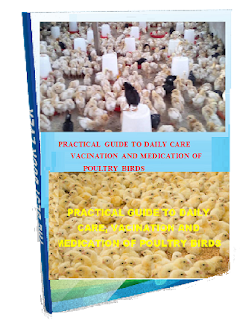Common and important diseases of cattle
Tick damage and tick-borne diseases Tick damage
Ticks can cause severe damage to cattle, particularly around
the udder and ears. The wounds will often get infected with bacteria and might
be attacked by flies some ticks cause greater damage than others, such as the
ones which infect cattle with heartwater Prevention is by tick control. You
could either use a pour-on or a plunge dip or spray dip if you have the
facilities for this. Pour-ons can be easier to use and you do not need
additional facilities, but these are more expensive, You may need to treat for
ticks as often as once a week in the wet season and then every second week in
the dry season, You may be able to treat less often if you vaccinate the cattle
against tick-borne diseases.
Tick-borne diseases Ticks can also infect cattle with redwater,
gallsickness and heartwater, European breeds tend to be at greater risk from
these diseases than indigenous and Brahman type breeds Older animals are more at risk than young
animals for redwater and gallsickness
Prevention
Prevention
of tick-borne diseases is by tick control, as already mentioned, as well as
vaccination
Vaccination is best done in calves under 6 months of age and one dose is sufficient. The
heartwater vaccine is given in the vein, and it must be done by a veterinarian. Because these
are live vaccines, signs of disease can occur and treatment may be needed following
vaccination, especially for the heartwater vaccine. Contact your veterinarian for advice on
these vaccines.
Redwater
Signs of redwater are fever, lack of appetite, red urine,
pale to yellow gums and eyes, and sometimes nervous signs such as difficulty in
walking, This disease can lead to deaths
if the animals are not treated
in time.
Treatment
Treatment involves keeping the
cattle calm. They should not be
driven over long distances and should be injected with Berenil or Imizol The dose for Berenil is 5 ml of made up solution (1 packet mixed
with 12,5 ml of sterile water) for each 100 kg (for example, 20 ml for a 400 kg
animal) The dose for Imizol is 1 ml for
each 100 kg (for
example, 4 ml for a 400 kg animal)
Gallsickness
Apart from being
passed to cattle by ticks, gallsickness can also be spread among cattle by
blood, for example by biting insects, dehorning and injecting the animals with
the same needle.
Sign of Gallsickness
Signs of gallsickness are depression, lack of appetite,
fever, pale to yellow gums and eyes, as well as constipation.The animal can be
sick for a longer period than in the case of redwater or heartwater.
Treatment
Treatment involves keeping the cattle calm. They should not
be driven over long distances. Tetracycline
or Imizol injections can be given. The dose for Tetracycline will depend on the
type you are using. It is important to read the instructions on the bottle. The
dose for Imizol is 2,5 ml for each 100 kg (for example, 10 ml for a 400 kg
animal). Note that this is a much higher dose than for redwater
Diseases that people can get from cattle
Brucellosis
Brucellosis can cause abortion in cows
and is also highly infectious to people
Tuberculosis (TB)
Cattle with tuberculosis often become very thin over time , People can get TB from cattle by drinking infected milk , You should have your herd tested for TB every year by your state
veterinarian. This involves a skin test , Animals testing positive are given a T brand on the left side of the neck.
Cattle measles
Cattle measles is a stage of
a tapeworm in cattle. When
people eat affected meat which
is undercooked, they develop tapeworms in the gut, Cattle are infected when they pick up tapeworm eggs when grazing on pastures
which are polluted because of unhygienic toilet practices by infected people, Infected cattle do not look sick and measles can only be seen in the meat at
slaughter , Cattle measles can lead to downgrading of your meat. Prevention involves good hygiene on farms. Use toilets, and not the veld.
Anthrax
Anthrax causes sudden death in cattle, People can get infected by eating infected meat and through cuts and sores. Anthrax can lead
to death , Infected carcasses should not be cut open and should be buried or burnt ,Prevention is by vaccination , If you suspect that anthrax may be present, contact your state veterinarian for advice.
Rabies
Rabies does not often occur in cattle, but they can be infected when bitten by a rabid dog or
jackal Cattle can either become very aggressive and excited, (e.g.with bellowing), or develop the
"dumb" form, when they are quiet, Once cattle show signs of rabies, treatment is no longer possible
People can become infected when feeling inside the mouth of a salivating animal for a
possible blockage, and then being bitten Prevention is by vaccination





Comments
Post a Comment